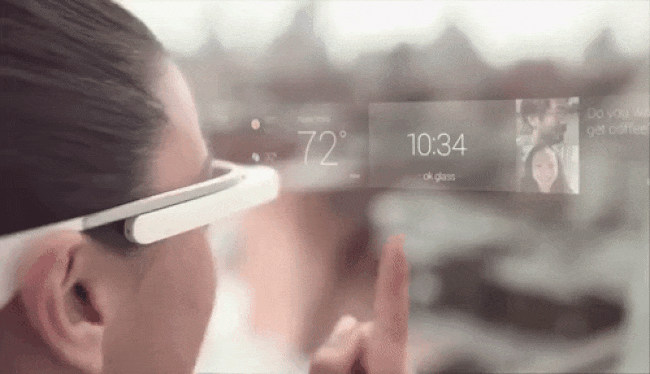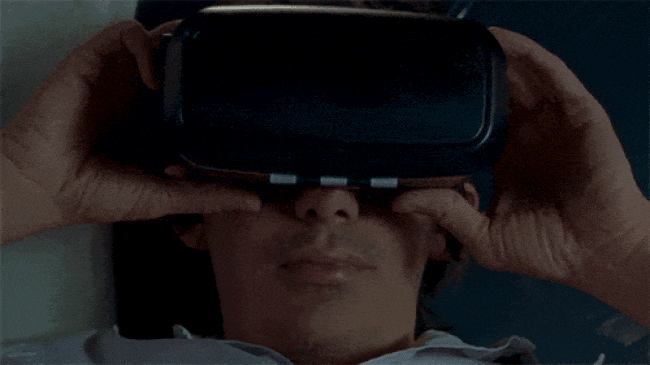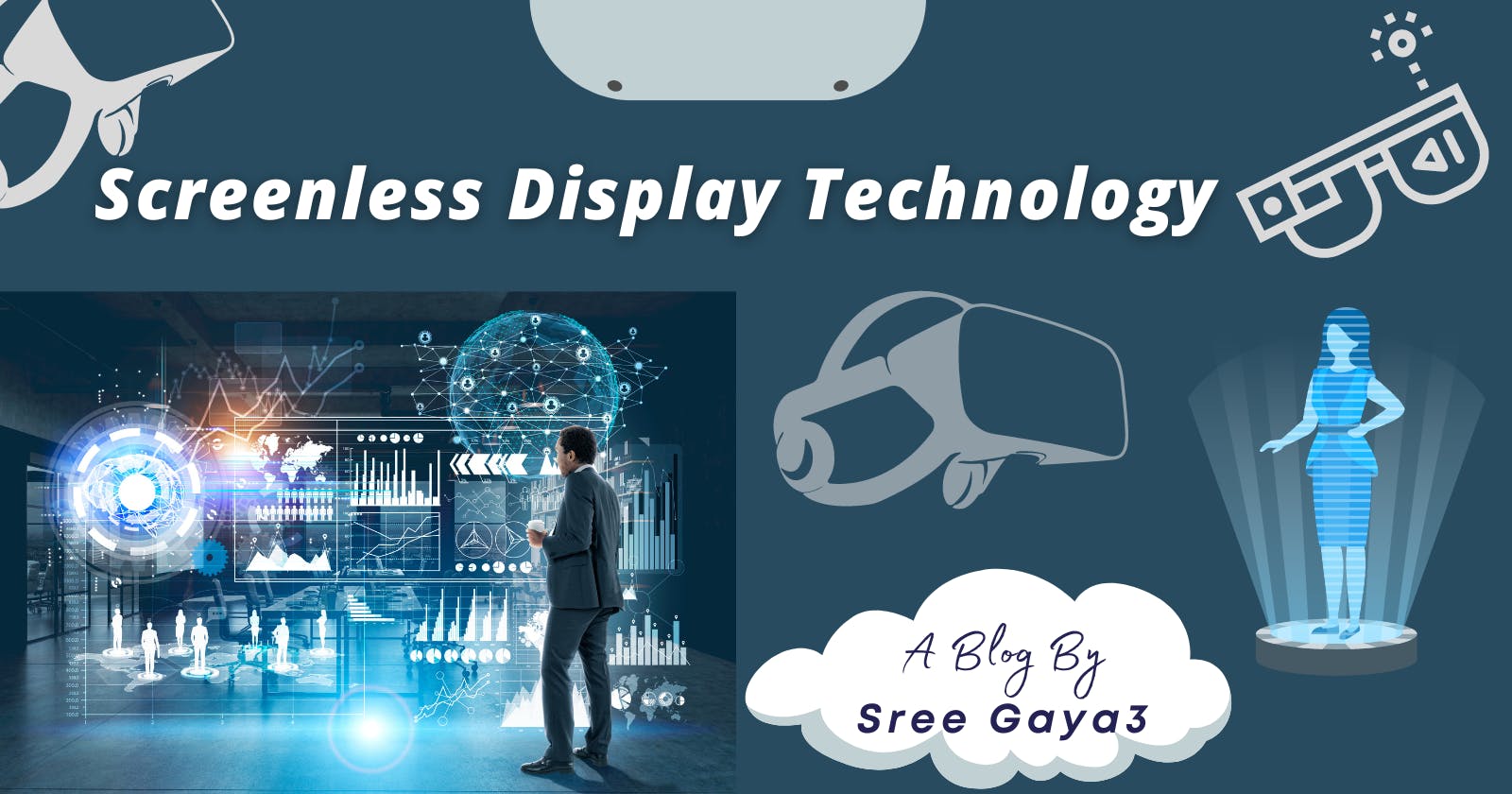Hello 👋 and Welcome to an exciting exploration of the world of technology !! If you're someone who loves staying up-to-date on the latest technology, you will enjoy what's in store for you in this article.
I recently came across Screenless Displays and was immediately fascinated by this innovative technology. I have only seen them in movies📽 and TV shows and never thought they could exist in the real world.
I spent the next few days learning everything I could about this technology. I'm so excited to share with you what I've learned about this amazing technology and why I think this could revolutionize the way we access and use information on devices.
So grab a cup of tea (or coffee, if that's more your style 😋) and let's dive into the amazing world of screenless displays together !!

Introduction
Imagine being able to watch your favorite movies or TV shows without ever having to look at a screen again. Sounds like a dream, right? Well, with Screenless Display Technology, it's no longer just a dream - it's a reality 🤩. This amazing technology allows you to experience images and videos as if they are floating right in front of you using lasers, special lights, holography, or projection to create the illusion.
No more straining your eyes to see a tiny screen or being tied to a device. With Screenless Display, you can enjoy and access your content in a whole new way. And, because Screenless Display doesn't require a physical screen, it offers a level of privacy that was previously unimaginable. So say goodbye to your old, outdated touchscreen displays - the future is here, and it's SCREENLESS 😎.

Types of Screenless Displays
Are you ready to enter a world beyond screens? There are three main types of Screenless Displays, each with its unique features and benefits:
Visual Image Display: These displays use light to create images that appear to float in the air without needing a physical screen. Some examples include holograms (like the one we have seen in Star Wars 😊), heads-up displays used in jet fighters, virtual reality goggles, and smartphones and tablet computers with LCD panels.

Retinal Display: These displays take things a step further by projecting images directly onto the human retina 👁. This means that the image is beamed directly into your eye, bypassing the need for any intermediate objects like screens or projectors. You may have seen the potential of retinal displays in movies like Terminator. This is very useful for some seriously private computing, especially when you're working in public places. Some examples of this technology include Google Glass and Eye Tap.

Synaptic Interface Display: This is the most advanced type of Screenless Display. These systems project images directly into the human brain 🧠, bypassing the eyes entirely. This technology doesn't use light at all and has the potential to be used for a wide range of applications, from security systems to education and business. While this technology is still in its early stages, it has already had some success in sending video signals from electronic cameras into the brains of living horseshoe crabs.
Why is Screenless Display Technology Important?
Screenless Display is a revolutionary technology that offers many advantages over traditional display technologies.
One of the main advantages of Screenless Displays is their energy efficiency 🔋because they do not require a physical screen or projector. This is particulary beneficial for devices that rely on batteries, as it can help extend the lifespan of the device.
Screenless displays also have the advantage of being much lighter and more compact compared to traditional displays. This is because they don't require a physical screen or projector, which can be quite bulky and heavy. The reduced weight and size of screenless displays make them more portable and convenient to use, as they can be easily carried around and can be used on the go.
Screenless displays, like heads-up displays (HUDs), offer improved readability in certain situations. HUDs project important information onto a transparent screen or directly onto the retina, allowing you to view the display while also maintaining focus on your surroundings. This can be especially useful for applications like navigation or aviation. For example, a HUD would allow you to view a map or other important information while driving without having to take your eyes off the road.

Some screenless displays, like retinal displays, offer a high level of privacy 🔐when computing in public places. This is because the image is directed straight onto the retina, eliminating the need for intermediate objects such as screens or projectors.
Because screenless displays don't have a physical screen, they are less prone to damage from impacts or scratches. This makes them a more reliable ⚖ and long-lasting option for devices that may be subject to rough handling or harsh environments.
Imagine a group of people trying to watch a presentation on a regular screen. If they are not all standing directly in front of the screen, they may have difficulty seeing the content clearly due to the limited viewing angle of the screen. However, if the presentation were being displayed on a screenless display, such as a holographic display, the group of people would be able to view the content from a wider range of angles without any loss in image quality.

One more significant advantage of screenless displays is it allows people with visual impairments to interact with and consume information more easily. Instead of struggling to see or read a physical screen, individuals with vision loss can use screenless displays to access information in a more intuitive and accessible way as screenless displays can project images directly onto the retina 👁🗨 or even transmit them directly into the brain 🧠.
Another benefit of screenless displays is the ability to achieve extremely high resolutions. These displays use lasers to project the image, which allows them to create very small and precise pixels. This results in a clear and crisp image. Additionally, the use of lasers allows these displays to reproduce colors more accurately and achieve high levels of brightness and contrast.
Additionally, Screenless Displays also have many other benefits like being able to present 3D and far-point images, offering a more detailed and immersive experience, etc.
Challenges with Screenless Display Technology?
Screenless display technology is still in the early stages of development, and there are several challenges that need to be overcome before it becomes widely available.
The limited availability of screenless displays can be a barrier to the broader adoption and use of these types of displays. For example, suppose a user is in a location with no screenless displays available. In that case, they may be unable to access the information conveyed through these displays.
It is essential to use these displays safely and responsibly to avoid any potential negative impacts on eye health or overall well-being. Some issues to consider when using screenless displays are prolonged use of audio at high volumes 🔊 and haptic feedback at high intensities, as these factors, can potentially cause strain on the eyes or other parts of the body. To prevent overuse or strain, it is important to use screenless displays responsibly and to take breaks as needed.

Creating screenless displays can be expensive and complex due to the specialized equipment and computing power needed. For example, holographic displays involve intricate technology and often have a high price 💰 tag. Projection displays also need specialized equipment, although they are generally less costly than holographic displays. These financial and technical challenges can make it difficult for manufacturers to produce screenless displays at a reasonable cost.
Conclusion
Screenless Display Technology has the potential to change the way we interact with and consume information. With its immersive and interactive experiences, screenless displays offer a new level of engagement and can be used in a variety of applications, including gaming, entertainment, and education.
While screenless displays are still in the early stages of development, ongoing research and development efforts are focused on improving their usability and accessibility and making them more widely available. As this technology continues to evolve, it has the potential to transform the way we experience and interact with the world around us.

I'm glad you took the time to read this article on screenless displays. I hope you found it interesting and informative 💡. If you have any thoughts or comments on this topic, please feel free to leave a message below. Drop a like 👍 and be sure to share it 🔂 with your friends, if you enjoyed this article.
I am planning on covering new technology trends on this blog in the future. Don't miss out on the latest and greatest in tech. Follow my blog and stay ahead of the curve. Trust me, you'll be the one dropping knowledge bombs left and right.
See you in the next one 👀. Wherever you are in the world, I wish you all the best 👍 Cheers !!!
